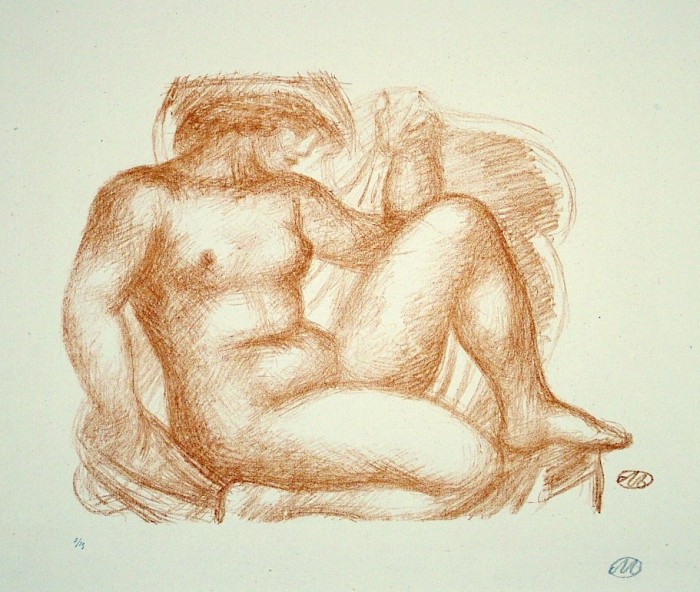Junon
Wednesday, January 26th, 2011Aristide Maillol (1861-1944), Juno, lithograph in sanguine, signed in pencil with the cipher lower right and numbered (7/25) lower left. Reference: Guerin 274 III, from the Maitres et Petits Maitres d”Aujourd’hui, published by the Galerie des Peintres Gravures, 1925, edition of 125. Printed on cream laid paper. In very good condition, with full margins, 8 1/2 x 11 1/4, the sheet 12 1/2 x 19 3/8 inches.
With the blindstamp of the Galerie des Peintres Gravures lower right (Lugt 1057b).
Provenance: collection of Dr. and Mrs. Freddy and Regina T. Homburger, purchased directly from the artist. The Homburgers were distinguished collectors of modern art. This print was exhibited in the exhibition of the Homberger collection, a traveling exhibit whose locations included the Fogg Museum at Harvard, the Ringling Museum in Florida, the University of Maine, and the Philadelphia Museum of Art (several labels appended to back of mat).
A fine impression of this iconic Maillol figure.
Junon is French for Juno, the Roman version of the Greek God Hera.







